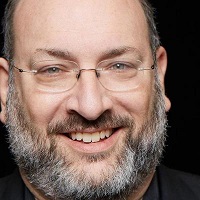 By David Harlow, JD MPH, Principal, The Harlow Group LLC
By David Harlow, JD MPH, Principal, The Harlow Group LLC
Twitter: @healthblawg
Host: Harlow on Healthcare
Hashtag: #HarlowOnHC
While at the HIMSS annual conference this year I spoke with many healthcare technology company leaders. I am pleased to share some of those conversations here. This selection focuses on collecting and understanding data, using it to create information that can be used to improve health and healthcare. Please check out some of my other short takes from #HIMSS18 as well.
Win Whitcomb – Chief Medical Officer, Remedy Partners
I spoke with Win Whitcomb about Remedy Partners’ work as a convener for CMMI’s Bundled Payments for Care Improvement initiative. The company supports provider organizations participating in the BPCI program, having gone live in Fall 2013. Thus far, Remedy Partners has been involved in managing about half a million episodes of care, representing $12 Billion in medical spending, in 48 different DRG-based episodes – working with many hospitals, physician groups, skilled nursing facilities, home health agencies, all of which may bear risk in the program. Remedy and its partners manage patients through episodes of acute illness and through recovery from that acute illness.
Michael Nissenbaum – President & CEO, Aprima
I discussed the current state of the EHR with Michael Nissenbaum of Aprima.
The EHR has always been a data collection tool, a mechanism for data aggregation. Now, as Michael said, the EHR is taking in data, analyzing it, and enabling its use back in the practice as an adjunct to the physician decisionmaking process, using data to diagnose and treat. The other significant change is that patients can now be in a constant and continuous relationship with their providers. Patients have access to data through their records and are providing additional information through activity monitors and other sensors.
Eric Sullivan – SVP, Innovation & Data Strategies, Inovalon
Inovalon has been around for about 20 years. SVP Eric Sullivan noted that it started out collecting and analyzing data from health plans: Claims data, PBM data, lab results when available. “Fast forward” and Inovalon has de-identified data on 230 million patients – health plan data, plus EHR data, plus patient-reported data, plus socioeconomic data. The goal is to compile the most complete patient profile possible, for the benefit of health plans, pharmacy, life sciences, ACOs, providers.
Simon Beulah – Senior Director of Healthcare, Linguamatics
Linguamatics is mining free-text notes in order to identify high-risk patients. Surprisingly to some, approximately 70% of electronic health record information is unstructured. Simon Beulah suggested in our conversation that physicians want to tell their patients’ stories. Predictive risk models can extract data regarding social determinants of health, which can be used in conjunction with structured data. Real-time mining of radiology reports can lead to prioritizing of reads and follow-up. For example, Linguamatics can flag a report of a pulmonary nodule overnight and trigger needed follow-up the next day. This approach allows care coordinators to focus on the cases that require more attention.
This article in more detail was originally published on HealthBlawg and is republished here with permission.
